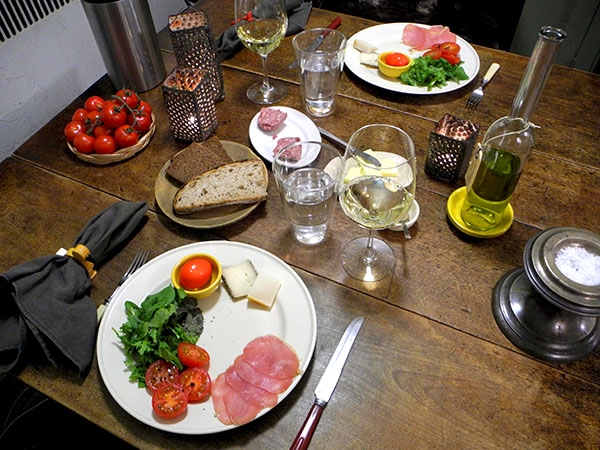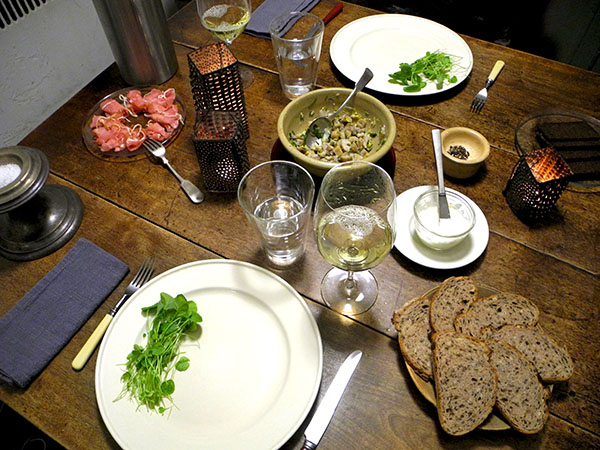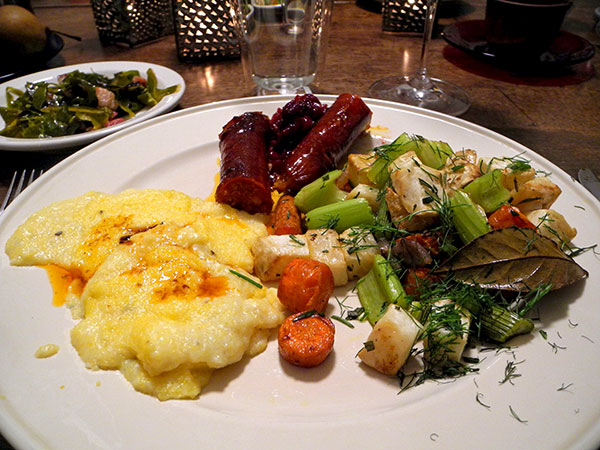
It was ‘Magische Mahlzeit‘ Vorabend (more on that holiday tomorrow).
For a little while I had been assembling a number of foods, prepared and fresh, that would lend themselves to being part of a picnic, and in particular, mostly a German picnic.
Last night, after a visit to Schaller & Weber in the afternoon, I was ready to assemble one.
As usual, the plates were anchored with a tasty dressed green, in this case various baby mustards from the Union Square Greenmarket, to which I added some grown-up arugula, also from the Greenmarket.

- the elements included a baby greens salad mix from Lani’s Farm mixed with some arugula from Bodhitree Farm; one German and one Vermont cheese: a sheep milk, Gutshöfer Ziegenkäse from Twenteland (a bos/Wald region in the eastern Netherlands bordering German Münsterland) via old Yorkville’s Schaller & Weber on the upper east side, and a goat milk ‘Manchester’ from Consider Bardwell Farm; 2 Rot-gebeizt pickled eggs from Millport Dairy Farm; 4 Backyard Farms Maine ‘cocktail tomatoes’ from Whole Foods Market; Kerrygold Pure Irish Butter; and finally, these all from Schaller & Weber: thin slices of Lachsschinken and a ‘Country Style’ pâté ‘Kassler Art‘, a neat tube of ‘Meretina‘ horseradish spread (we couldn’t resist the very neat packaging while at S & W yesterday), slices of a Balthazar rye boule and a ‘Westphalian Style whole grain pumpernickel bread’ from Chicago’s Rubschlager Bakery
- the wine was a German (Pfalz) white, Friedrich Becker Pinot Blanc 2013, from our much-missed former neighborhood wine shop, Appellation Wine & Spirits
- the music was Heinrich Ignaz Biber’s ‘Harmonia artificiosa-ariosa’, six partitas scored for various instrumental combinations, performed by Tafelmusik



